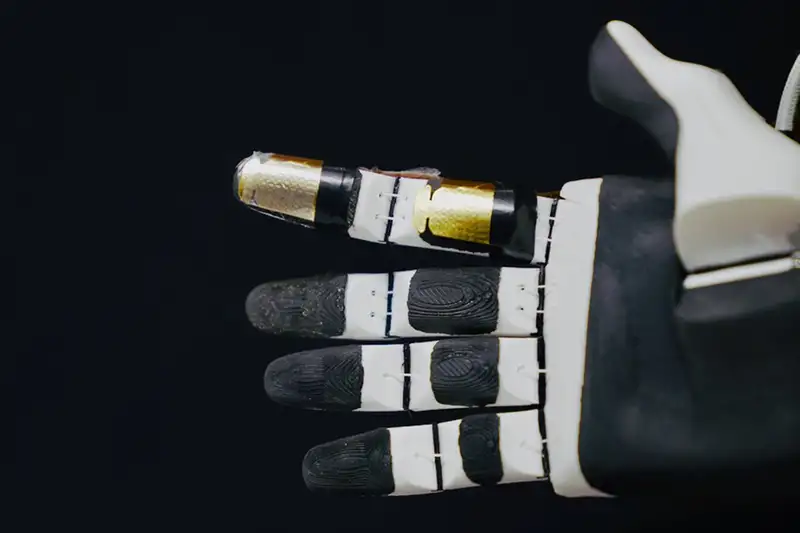
Artificial skin can sense 1000 times faster than human nerves
An artificial skin that senses temperature and pressure can send signals 1000 times faster than the human nervous system. The skin could one day cover prosthetic limbs to help people use them better or be used on robots to help them sense their surroundings.
Benjamin Tee at the National University of Singapore and his colleagues created the artificial skin, consisting of physical sensors that can detect pressure, bend, and temperature, placed inside a layer of plastic.
All of the sensors are connected together using a single wire, meaning that the measurement from across the skin arrive at the same time.
This approach means that overall the artificial skin is around 1000 times faster at sending signals than nerves in human skin. “When we touch a cup of coffee for example, our skin instantly sends electrical signals to our muscles and brains for processing,” he says. “The information is sent via nerves, and we have a lot of them, in fact, more than 150,000 kilometers of nerves in every human being.”
The team tested the artificial skin on the thumb of a robotic hand, which improved the robot’s ability to grasp a cup of coffee without slipping because it could sense immediately when it was passed the cup.
“[This] has the potential to greatly simplify and make it possible for robots to have whole body skin, just like humans,” says Tee. One other application of this technology could be for advanced prosthetics, giving sensation back to individuals.
 English
English Arabic
Arabic


